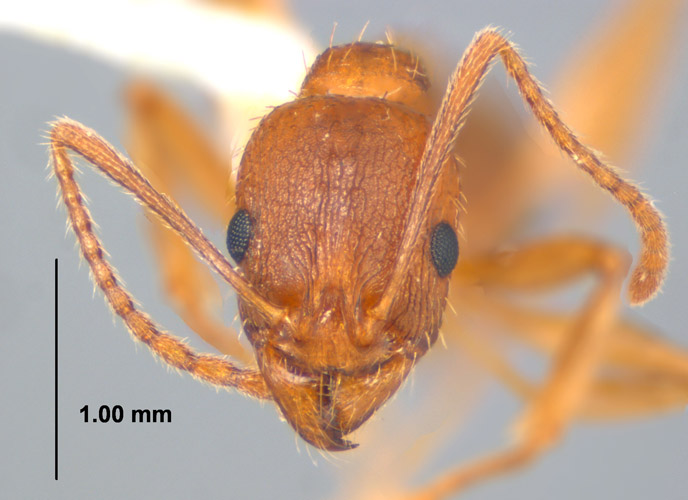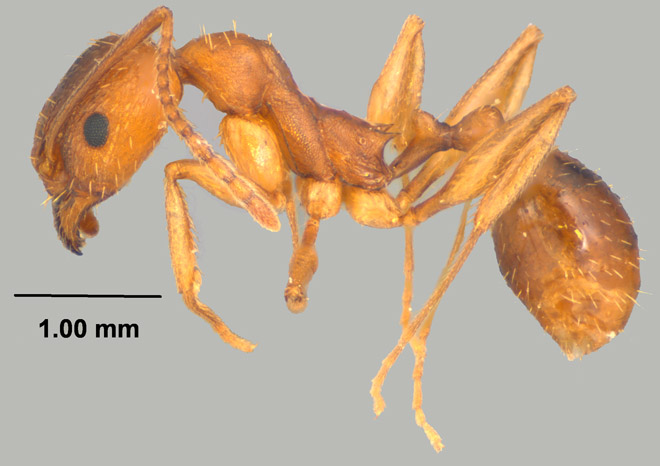Introduction
Ants in the genus Aphaenogaster are medium sized to large, slender with long legs and antennae, usually have propodeal spines (a few species lack spines), have 12 segmented antennae with the last 4 segments forming a weak club. The genus is widespread in North America and species nest in rotting wood, under bark, and in soil.
Identification
Aphaenogaster rudis is a reddish-brown species that occurs in lower elevations in mountainous or rocky habitats. Workers of this species usually have heads not as elongate as those of A. carolinensis and A. fulva, but instead much wider. In our area, A. rudis most resembles A. carolinensis, but it is not as long legged. It is similar in appearance to A. miamiana, but has slightly smaller eyes, a more sturdy compact appearance, and the habitat where it occurs is distinctly different. It is also similar to A. picea, which also occurs in rocky or mountainous habitats, but differs in color and possibly in the amount of sculpture present on the head, with A. rudis having more sculpture.
Biology and Economic Importance
Distribution
Literature Cited
Links
Discover Life Images




